Video Surveillance: Cloud & On-Premise System Tradeoffs
I. Overview
Comparison of where different video surveillance functions can be located, along with the tradeoffs for each for different scenarios, especially in light of the advent of AI. For purposes of this discussion, “edge” and “on-premise” are used interchangeably, in contrast with the “cloud”.
II. Video Surveillance System Functions & Locations
There are 3 primary functions needed for video surveillance:
- System management
- Video recording
- AI analytics – this one is newer
Each of these 3 functions can be performed at 3 different locations:
- Cloud
- Edge server
- Edge camera, although I have never seen this one used for system management.
Each location for the function has tradeoffs based on the customer scenario.
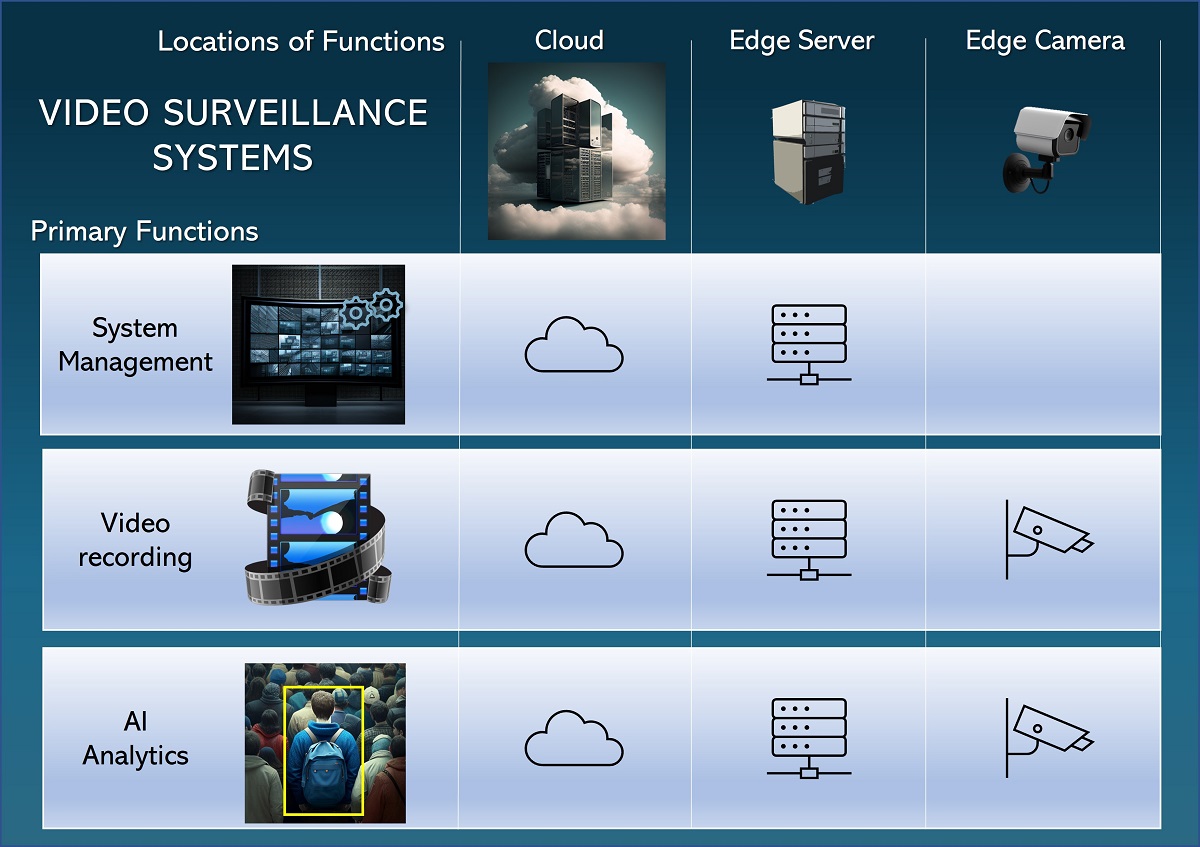
III. Scenarios Where Functions Located in Cloud is Best
First, let’s touch on a few situations where the cloud location is the most advantageous:
Multi-site management

A cloud approach is the simplest and most efficient way to manage multiple sites because there is only one system to manage.
Cyber Security, Fast Updates
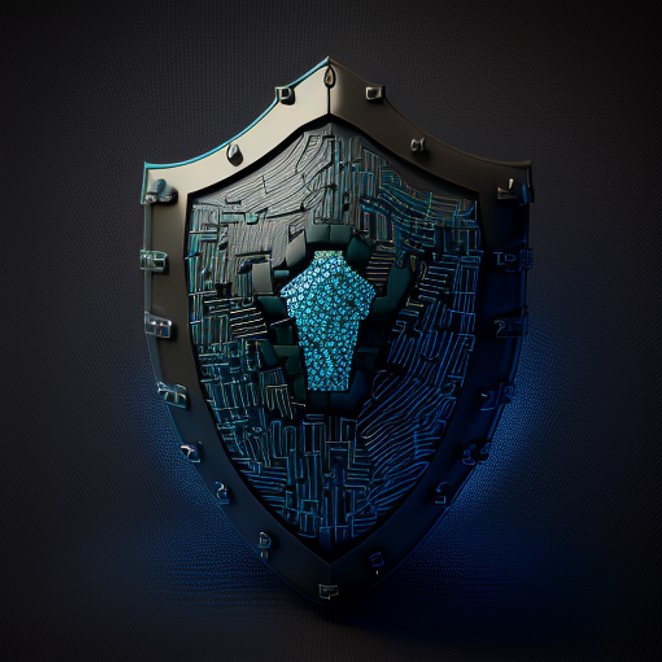
With the software and computing in the cloud, you get immediate updates for software security patches and rapidly evolving AI analytics.
Economies of Scale

Cost reduction – this comes from the cloud’s economies of scale, derived from its full utilization of the shared hardware, plus fewer onsite resources are required for updates.
IV. Scenarios Where Cloud Alone is Sub-Optimal
There are also scenarios where a cloud location is sub-optimal. In these cases, combining the cloud and edge locations works best.
Near-Instant Response Time Needed
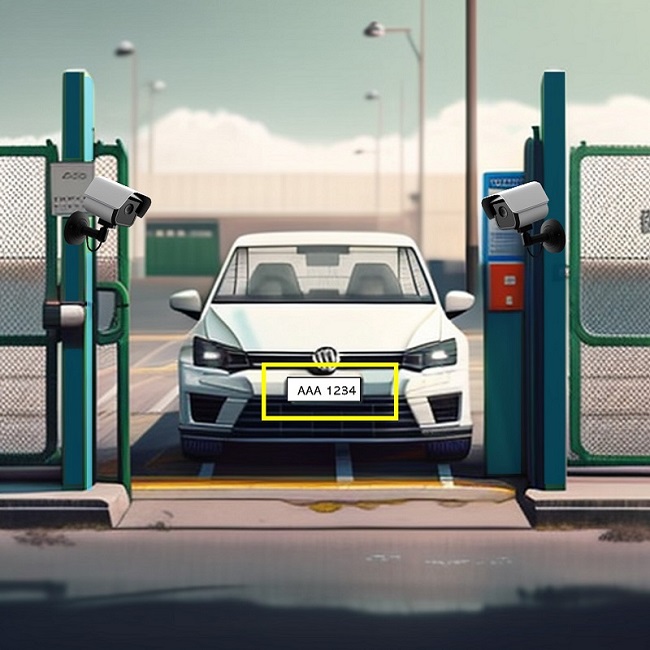
There are times when an unusually fast AI compute response time is needed, such as for license plate recognition to open doors/gates. In such situations, combining the cloud with edge AI compute is ideal.
Video Recording Protection

Cloud video recording protects from video loss in smash-and-grab situations. Even so, an ideal solution combines cloud with a day or more of edge recording to also address a temporary loss of internet; the combination virtually eliminates the risk of loss of video recording,
Internet Bandwidth Limitations
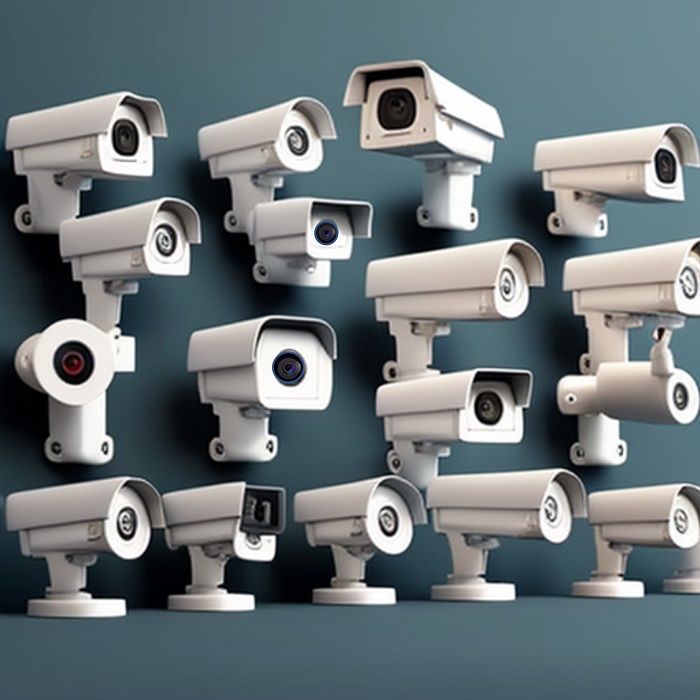
While sophisticated cloud video surveillance systems perform bandwidth management, sites with many cameras may still require a mix of cloud and edge recording to overcome bandwidth limits.
V. Ideal Video Surveillance System: Primarily Cloud + Selected Edge Servers
For the vast majority of situations, the ideal video surveillance is primarily cloud-based, while also flexibly utilizing the edge for select, but critical aspects. Further, the relative use of cloud versus edge (on-premise) servers should be easily adapted as companies evolve.
Below I share a more comprehensive matrix that identifies how other critical aspects are impacted by where each function is located

VI. Function Location Trade-offs — Detailed Grid
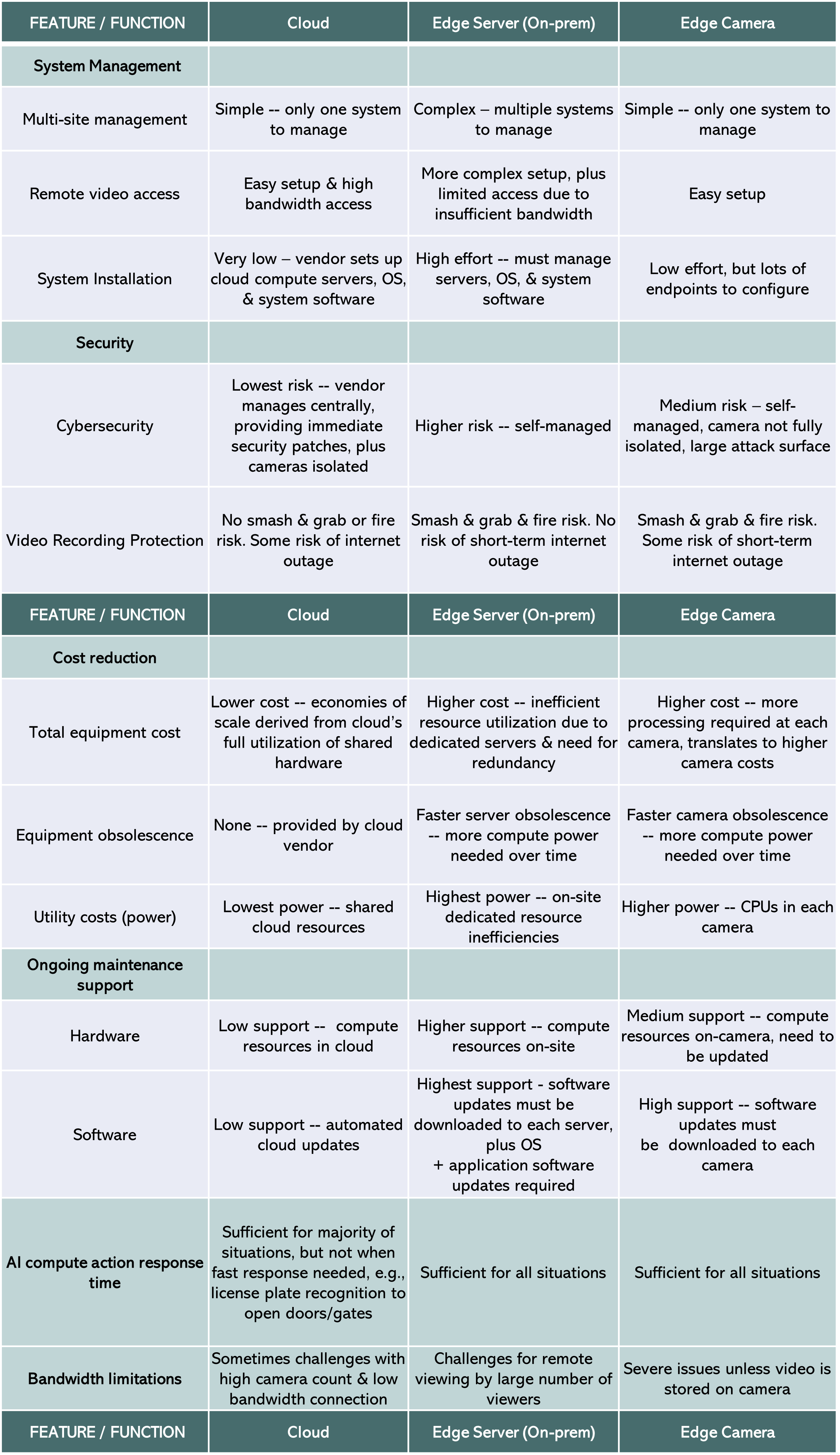
Related Articles:

ABOUT THE AUTHOR
Dean Drako is Founder and CEO of leading cloud video surveillance provider, Eagle Eye Networks, which ranked 307th on the 2021 “Deloitte Technology Fast 500” list spotlighting the fastest growing technology companies in North America. Drako is also chairman of Brivo, a cloud access control company; and founder and CEO of Drako Motors, where he launched Drako GTE, a 206-MPH, 1200HP, four-passenger electric luxury supercar.
In addition, Drako was Founder, President, and CEO of Barracuda Networks, where he created the IT security industry’s first spam filter appliance and then grew the company to more than 140 products and 150,000 customers from its inception in 2003 through 2012. Barracuda went public on the NYSE. With 25-plus years of experience building profitable, high-growth, high-recurring revenue technology companies, Drako was named one of Goldman Sachs “100 Most Intriguing Entrepreneurs of 2014.”
Drako received a Bachelor of Science in Electrical Engineering at University of Michigan, and his Master of Science in Electrical Engineering from UC Berkeley.
